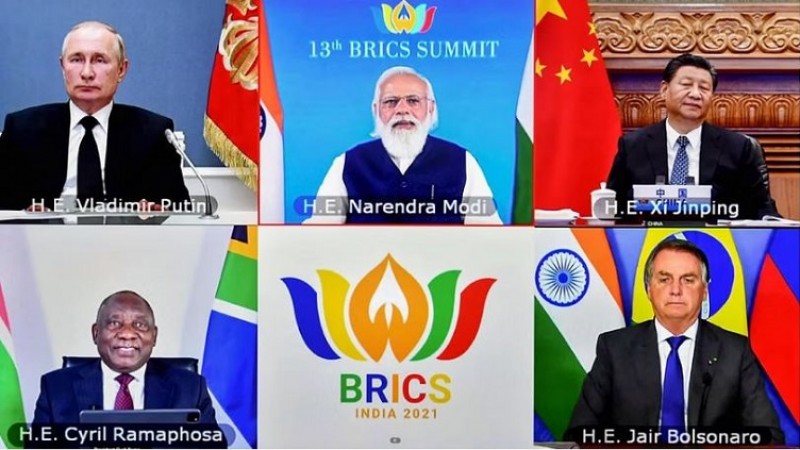
The 15th BRICS summit unfolded against the backdrop of Johannesburg's bustling skyline, where world leaders convened from the 22nd to the 24th of August. Guided by the gracious host, South African President Cyril Ramaphosa, the summit welcomed dignitaries including Brazilian President Luiz Inacio Lula da Silva, Chinese President Xi Jinping, and Indian Prime Minister Narendra Modi. Notably absent in person, Russian President Vladimir Putin's virtual presence, prompted by an international warrant, found representation through Foreign Minister Sergey Lavrov.
At the heart of discussions during the summit lay a tapestry of critical global concerns: the relentless grip of the COVID pandemic and its reverberations across economies, the inexorable march of climate change demanding sustainable development, intricate threads of international trade and investment, the perennial specter of security and counter-terrorism, and the ambitious canvas of expanding BRICS' membership.
During the summit's inauguration, Commerce and Industry Minister Ibrahim Patel painted an optimistic portrait as he addressed the BRICS Business Council. Patel underscored the transformation of Africa from being a mere resource supplier to a defining presence in the emerging global narrative. Amid the world's myriad challenges and crises, Patel urged attention to the gallant individuals confronting these trials, championing the potential for cooperative partnerships to fuel economic growth.
In contrast to the G7, a conclave of advanced economies centered around the United States, Japan, and the UK, BRICS has steadily advanced to assume the mantle of the voice for emerging economies. This trajectory challenges the Western dominance etched into global affairs. While a multitude of agendas vied for attention, the discourse revolved fervently around the enlargement of BRICS' membership.
A constellation of over 40 nations, including Saudi Arabia and Iran, has expressed aspirations to align with this dynamic consortium. Closely observed by observers, the anticipated expansion has been hailed by The Wall Street Journal as a force that will amplify BRICS' global sway. A closer inspection of the avenues of expansion reveals a fascinating confluence of factors that could potentially reshape the global political and economic landscape.
BRICS' meteoric rise is underscored by its population share, with more than 40 percent of the world's inhabitants residing within its member countries. Simultaneously, the International Monetary Fund has christened BRICS as stewards of a third of the global GDP. Furthermore, data from the World Economic Outlook highlights BRICS' ascendancy beyond the G-7 economies in terms of purchasing power parity as of 2023.
Born in 2009, BRICS has nurtured India and China into economic powerhouses, with projections from agencies like Goldman Sachs suggesting these nations might ascend to global economic summits. In this context, the discourse around the expansion of BRICS takes on layers of intrigue. Pundits muse on the prospect of an alternative bloc poised to counterbalance Western dominance, or to serve as a buffer against China's recalibration of its trade relations with the United States.
Among the champions of expansion are South Africa and Brazil, enthusiastic about the bloc's widening embrace. However, amidst these exuberant hopes, India stands firm, advocating for a delicate equilibrium between existing members, regardless of the entry of new entrants. As the summit's reverberations continue to resonate, the world watches with bated breath, eager to witness whether BRICS will indeed sculpt a new epoch in the grand tapestry of global diplomacy and economics.